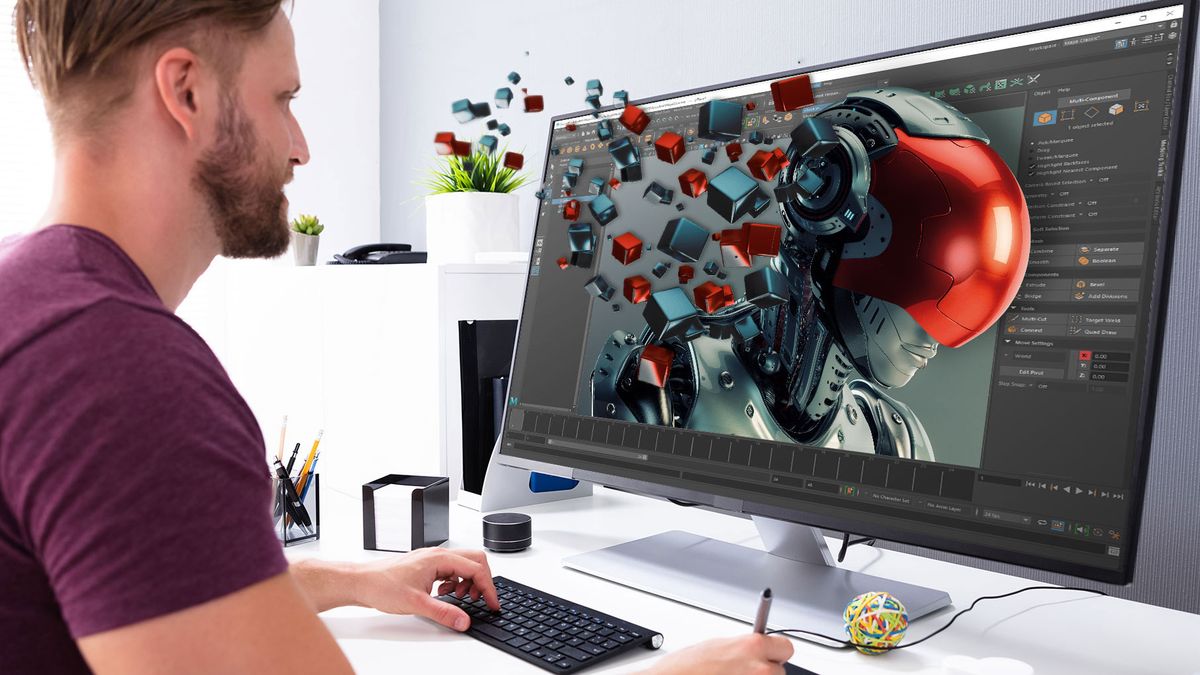Harness the power to slash rendering times with AMD Threadripper PRO
Eliminate bottlenecks and create at the speed of thought.

Being a 3D artist may be enjoyable, with fun tasks, creative outlets and a vibrant community to be part of, but it does present several roadblocks to being as great as it could be. The biggest hurdle faced by everyone from animators to lighters and riggers, is that of compute power.
As software becomes more capable, the requirements of the hardware it runs on increase, and it can become a game of cat and mouse between the two. Luckily, developments in hardware have taken a giant leap forward, enabling designers to take advantage of all the tools and techniques they use in their projects day-to-day.
Multithreading for the people
We're taking a look at AMD's Threadripper PRO CPUs, which deliver massive amounts of computing power, not only through impressively high clock speeds but by offering industry-leading core counts. Software like Autodesk's 3D Studio Max can take advantage of the single-threaded class-leading performance and multithreading possibilities – massively reducing wait times for high-resolution renders that include attributes such as global illumination, which can be very compute intensive.
The rapid increase in quality of output that clients now require has exacerbated this intensity too; 4K content is now an industry standard, with 8K gaining a lot of traction also. Workstations therefore need to support content creators who work with such high-resolution assets.
A universal approach to computing
Not only do artists see the benefits of the raw processing power on offer here, but also the gains of a more holistic approach to a workstation system. Designers will notice the high core count with these PRO processors, as well as the multiple lanes of PCIe 4.0 available, which clear away problematic bottlenecks often experienced with other systems, allowing for huge increases in connection speed to storage devices, graphics cards and other add-on devices. A large memory bandwidth helps with transferring large texture sets into RAM, further supporting system resources and allowing creators to work efficiently and quickly.
What we do know for a fact is that it's no good being able to render frames at exceptional speeds if your workstation sits twiddling its thumbs while images are sent and saved to a sluggish hard drive.
Create at the speed of thought
The benefits are clear when you see the results in action, and you only have to glance at the work done by developers, artists, and animators to see the difference. When a task relies heavily on iterative processes, the ability to render frames consistently, speedily and reliably becomes all-important. It isn't just the hardware bottlenecks in play, but the restrictions on creative thought and process too, and that's where we found that the Threadripper PRO shines.
Simulation experiences
It's not all about the render, though. Waiting for the final stunning images to materialise can be painful, and that applies to many other tasks too – especially the ones that require frame-by-frame updates to effects like cloth and fluid simulations. The Threadripper PRO takes these hits on the chin easily, allowing the digital content creator to stay focused on the worlds they are creating, rather than enduring endless waits while the workstation struggles to keep up.
It's not often that an enhancement in hardware can have such a profound impact on render times, especially considering the current cost we're seeing for Threadripper PRO-based systems. These CPUs are a great choice if you're looking to upgrade or add a new system to your business.
Head here for more information and to get your own AMD Threadripper PRO.

Thank you for reading 5 articles this month* Join now for unlimited access
Enjoy your first month for just £1 / $1 / €1
*Read 5 free articles per month without a subscription

Join now for unlimited access
Try first month for just £1 / $1 / €1
Get the Creative Bloq Newsletter
Daily design news, reviews, how-tos and more, as picked by the editors.
Rob Redman is the editor of ImagineFX magazines and former editor of 3D World magazine. Rob has a background in animation, visual effects, and photography.
